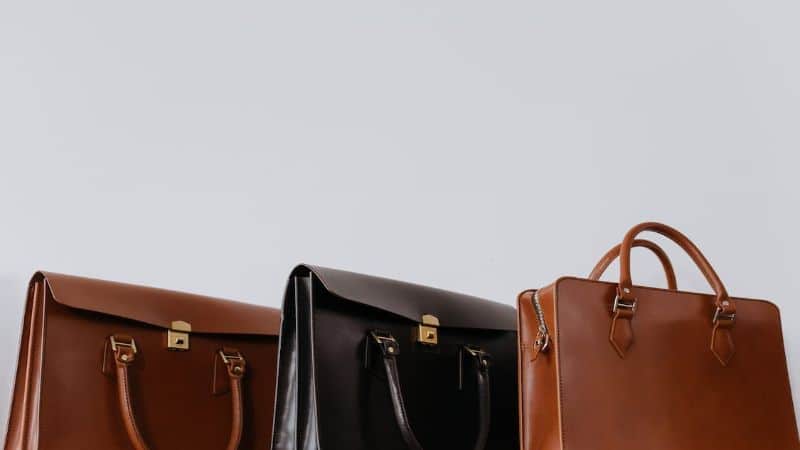Ever found yourself at the airport, juggling a handbag and your carry-on, wondering if you’re about to be stopped at the gate? You’re not alone. Navigating the rules of what you can take aboard can feel like solving a puzzle with pieces that don’t quite fit.

But don’t worry, you’re about to become a packing pro. Whether you’re a minimalist traveler or someone who needs options, knowing the ins and outs of hand luggage and handbag allowances will make your next trip a breeze. Let’s dive in and clear up the confusion, so you can board with confidence and style.
Understanding Hand Luggage and Handbag Allowances
Navigating airport security is easier when you know the protocols for hand luggage and handbags. Regulations can vary by airline, but some general guidelines apply across the board. Most airlines allow one piece of hand luggage plus a personal item, which could be a handbag.
The dimensions and weight for hand luggage are strict. Cabin bags typically must fit within the overhead locker. A standard size to remember is 22 inches x 14 inches x 9 inches, including handles and wheels. Handbags are different. They should be able to fit under the seat in front of you. This often gives you a little more flexibility, but keeping it compact is wise.
Why is this important? Because even the most stylish bag won’t make the cut if it doesn’t fit the size criteria. As a fashion aficionado, you know that form and function can coexist. Select a handbag that’s not just chic but also compliant with airline regulations.
To avoid surprises at the gate, double-check your airline’s policy before you pack. Some carriers enforce a one-bag rule, making you choose between a handbag or a suitcase. Airlines with more lenient policies consider a handbag to be your personal item, allowing an additional piece of hand luggage.
Remember, the hand luggage is for items you’ll need during the flight or for valuable goods you can’t risk losing. Handbags are more for essentials like travel documents, wallets, and electronics.
Be sure to utilize every pocket and compartment to organize your belongings effectively. With a well-chosen handbag, you’ll transit smoothly and stylishly through any airport.
The Difference Between Hand Luggage and Handbags
When you’re jet-setting across the globe, understanding the distinction between hand luggage and handbags is crucial. Hand luggage, also known as a carry-on, is your travel lifeline. It’s the larger item you stow in the overhead bin. Handbags, though, are more personal and compact—think of it as your travel sidekick slipping under the seat.
Size Matters
Here’s the deal with size:
- Hand luggage typically measures up to 22 x 14 x 9 inches.
- Handbags should be small enough to fit under the seat, usually no larger than 18 x 14 x 8 inches.
Weight Watch
And weight:
- Carry-ons have a weight limit—often around 15 to 22 pounds.
- Handbags aren’t usually weighed, but keep it manageable—you’ll tote it around more.
Functionality Is Key
Function comes into play too:
- Hand luggage is for bulkier items, clothes, and travel essentials.
- Handbags store valuables, travel docs, and items you need on hand.
Style With Substance
Think about style:
- Hand luggage is about utility but doesn’t have to skimp on style.
- Handbags can be a fashion statement. But remember, functionality trumps fashion.
Check Specifics Before You Go
Before you pack:
- Verify your airline’s size and weight specifications for both.
- Rules vary by airline, with budget carriers often more restrictive.
Be Prepared
Lastly, be travel-savvy:
- Prepare for security checks—easy access to electronics and liquids.
- Use your handbag for items you’ll need during the flight, like earphones or a book.
By recognizing the distinction and following airline guidelines, you’ll navigate the airport like a pro, avoiding hold-ups and ensuring a smoother journey.
Hand Luggage Size Restrictions
When prepping for your next flight, knowing the ins and outs of hand luggage size restrictions is crucial. Each airline sets its own limits, so always check the guidelines ahead of time. Typically, carry-on bags can measure up to 22 inches by 14 inches by 9 inches, but these dimensions can vary.
Airlines enforce these restrictions strictly – your bag must fit in the overhead compartment or under the seat in front of you. If it doesn’t, you might have to check it and possibly incur additional fees. And remember, bulky outer pockets or wheels often count toward the size limit. To sidestep any last-minute hassles, measure your hand luggage before leaving for the airport.
The best way to ensure compliance is by using a hand luggage size checker. You’ll find these metal frames at the check-in area, allowing you to see if your bag fits the profile. If you’re a frequent traveler, consider investing in a bag that’s advertised as compliant with most airline restrictions.
« Can You Take a Handbag and Hand Luggage on Emirates? Unpacking the Rules
Where Does Handbag Leather Come From? Unveiling the Surprising Source Journey »
To maximize your carry-on capacity, choose luggage with a hard shell; it’ll provide a precise size without the risk of bulging at the sides. Soft-sided bags offer flexibility but can deceive you into overpacking, which, in turn, can lead to size issues.
Beware, even the right size luggage can become a problem if overpacked. Excessive stuffing could distort the shape, making it a challenge to fit into measuring devices. Pack smart, utilizing every inch wisely, and keep the profile of your bag streamlined and within the allowed dimensions.
Here’s a quick reference for some common airline hand luggage size restrictions:
| Airline | Maximum Size (inches) |
|---|---|
| Delta Airlines | 22 x 14 x 9 |
| United Airlines | 22 x 14 x 9 |
| Southwest | 24 x 16 x 10 |
| American Airlines | 22 x 14 x 9 |
Remember, what you pack inside matters as much as the bag’s size. Heavy bags might meet size requirements but exceed weight limits, so weigh your carry-on to avoid surprises at the gate. Balancing size and weight is key to seamless travel.
Handbag Restrictions
Remember, not all handbags are created equal in the eyes of airlines. That stylish tote might catch envious glances, but will it fit under the seat in front of you? Here’s what you need to know about handbag restrictions.
First up, size matters. Each airline has specific dimensions for what constitutes a handbag. These are typically smaller than your carry-on luggage, designed to snugly fit under the seat. Think of a purse, laptop bag, or a small backpack – that’s your ballpark. Depth is a key dimension here; bulky bags are a big no-no.
Weight is your second hurdle. This isn’t just about what you can carry; it’s what the airline permits. Many airlines have a weight limit for handbags, typically ranging from 5 to 8 kilograms. Overweight bags can result in fees, or worse, having to check an item you intended to have on-board.
Here’s a quick breakdown of restrictions from popular airlines:
| Airline | Size Limit | Weight Limit |
|---|---|---|
| Delta Air Lines | 11 in x 14 in x 7 in (28 cm x 35 cm x 18 cm) | No weight restriction specified |
| United Airlines | 9 in x 10 in x 17 in (22 cm x 25 cm x 43 cm) | No weight restriction specified |
| American Airlines | 18 in x 14 in x 8 in (45 cm x 35 cm x 20 cm) | No weight restriction specified |
Materials count too. A flimsy bag might sag or tear when crammed with your travel essentials. Choose durable materials – leather, heavy-duty nylon, or canvas. They’ll stand up to the rigors of travel and security checks without tearing or losing shape.
Functionality is key, but don’t neglect aesthetics. Airlines don’t discriminate on color or pattern, so let your personality shine through. Just remember that functionality should never sacrifice style. After all, you’re navigating airports, not the runway.
Lastly, compartments are your best friend. A handbag with multiple pockets can save you from a security nightmare. Keep your liquids and electronics easily accessible. It’ll make your travel smoother and keep stress levels in check.
Tips for Carrying a Handbag and Hand Luggage Together
Smart packing makes for an easier journey. Remember, combination is key. When you’re selecting a handbag for your travels, think beyond style; focus on functionality and how it complements your hand luggage.
First off, pick a handbag that fits under the seat. This ensures your hand luggage can take the overhead space without any hassle. Check dimensions online or use in-store models to guide your purchase.
Aim for bags with flexible materials—they’re more forgiving and can squeeze into tight spots if needed. Leather or fabric? That’s your choice but remember the goal: convenience over looks.
Balance the load. Distribute essentials between your handbag and hand luggage. Travel documents, electronics, and valuables should stay with you in your handbag. Clothes and larger items can go overhead.
- Use every pocket: a well-organized bag saves you time
- Carry only essentials in your handbag to keep it light
- Detachable straps are a lifeline. Hook your handbag onto your rolling luggage
Understanding airline policies is non-negotiable. You don’t want to get caught at the gate unprepared. With these tips, you’ll manage your handbag and hand luggage like a travel pro. Keep in mind, flexibility and organization trump everything when managing two pieces of luggage.
Traveling shouldn’t be a jigsaw puzzle. Keep it simple, stick to your tested methods, and you won’t just travel—you’ll travel smart.
Conclusion
Armed with these insights you’re now ready to tackle the challenge of traveling with both a handbag and hand luggage with ease. Remember to measure up, pack smart and stay organized. With a little preparation and knowledge of your airline’s policies you’ll be jet-setting without a hitch. Keep those essentials within reach in your handbag and you’ll have a smooth and stress-free flight. Safe travels!
Frequently Asked Questions
What is the difference between hand luggage and handbags?
Hand luggage refers to the carry-on baggage that fits in the overhead bin, while handbags are smaller items like a purse or briefcase that can fit under the seat in front of you.
Are there standard size and weight restrictions for hand luggage?
While there is no universal standard, most airlines provide specific size and weight limits for hand luggage. It is essential to check the airline’s policy before you travel.
How can I choose a stylish yet compliant handbag for air travel?
Look for handbags that fit your personal style and also meet the airline’s size restrictions. Opt for a design with various pockets to organize essentials.
What should I consider when preparing for a security check at the airport?
Prioritize items that you’ll need during the flight in the handbag for easy access and remember the liquids rule—containers should be under 3.4 ounces (100 milliliters) and placed in a clear, quart-sized bag.
Is there a way to ensure my hand luggage will be accepted on the plane?
You should always measure your hand luggage before heading to the airport and consider using a hand luggage size checker if one is available.
How can I maximize the capacity of my hand luggage?
Choose hard-shell luggage to optimize space and avoid size issues, ensuring it fits within your airline’s size restrictions.
What tips are there for carrying both a handbag and hand luggage?
Select a handbag that can be easily tucked under the seat and distribute essentials evenly between the handbag and hand luggage to manage them efficiently. Also, be aware of airline policies regarding multiple pieces of hand luggage.
How can I avoid exceeding the hand luggage weight limit?
Be mindful of the weight when packing and consider using a luggage scale to check your bag’s weight before going to the airport to avoid any additional fees for overweight luggage.









